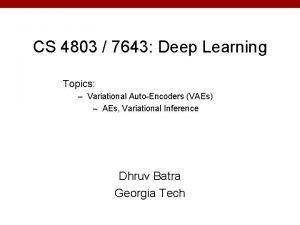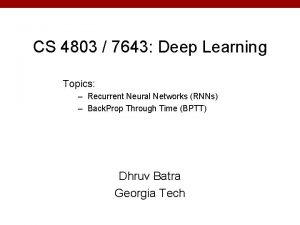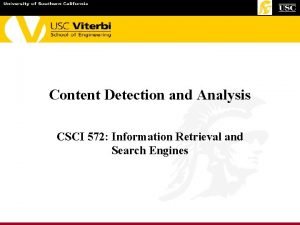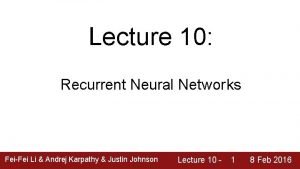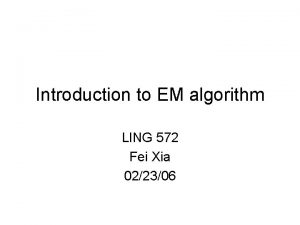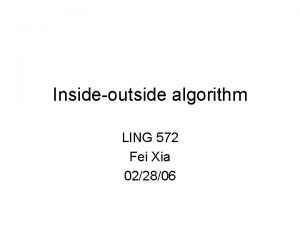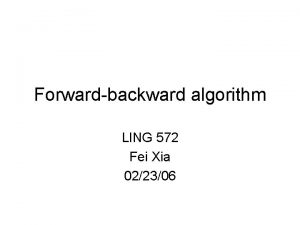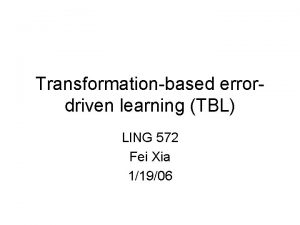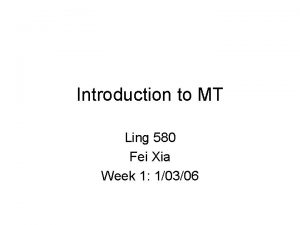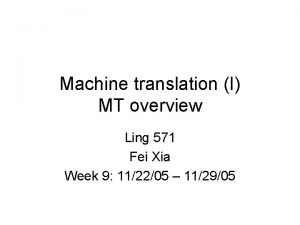The EM algorithm Part 1 LING 572 Fei






















- Slides: 22

The EM algorithm (Part 1) LING 572 Fei Xia 02/23/06

What is EM? • EM stands for “expectation maximization”. • A parameter estimation method: it falls into the general framework of maximum-likelihood estimation (MLE). • The general form was given in (Dempster, Laird, and Rubin, 1977), although essence of the algorithm appeared previously in various forms.

Outline • MLE • EM: basic concepts

MLE

What is MLE? • Given – A sample X={X 1, …, Xn} – A vector of parameters θ • We define – Likelihood of the data: P(X | θ) – Log-likelihood of the data: L(θ)=log P(X|θ) • Given X, find

MLE (cont) • Often we assume that Xis are independently identically distributed (i. i. d. ) • Depending on the form of p(x|θ), solving optimization problem can be easy or hard.

An easy case • Assuming – A coin has a probability p of being heads, 1 -p of being tails. – Observation: We toss a coin N times, and the result is a set of Hs and Ts, and there are m Hs. • What is the value of p based on MLE, given the observation?

An easy case (cont) p= m/N

EM: basic concepts

Basic setting in EM • X is a set of data points: observed data • Θ is a parameter vector. • EM is a method to find θML where • Calculating P(X | θ) directly is hard. • Calculating P(X, Y|θ) is much simpler, where Y is “hidden” data (or “missing” data).

The basic EM strategy • Z = (X, Y) – Z: complete data (“augmented data”) – X: observed data (“incomplete” data) – Y: hidden data (“missing” data)

The “missing” data Y • Y need not necessarily be missing in the practical sense of the word. • It may just be a conceptually convenient technical device to simplify the calculation of P(x |θ). • There could be many possible Ys.

Examples of EM HMM PCFG MT Coin toss X (observed) sentences Parallel data Head-tail sequences Y (hidden) State sequences Parse trees Word alignment Coin id sequences θ aij bijk P(A BC) t(f|e) d(aj|j, l, m), … P 1, p 2, λ Algorithm Forwardbackward Insideoutside IBM Models N/A

The EM algorithm • Consider a set of starting parameters • Use these to “estimate” the missing data • Use “complete” data to update parameters • Repeat until convergence

• General algorithm for missing data problems • Requires “specialization” to the problem at hand • Examples of EM: – Forward-backward algorithm for HMM – Inside-outside algorithm for PCFG – EM in IBM MT Models

Strengths of EM • Numerical stability: in every iteration of the EM algorithm, it increases the likelihood of the observed data. • The EM handles parameter constraints gracefully.

Problems with EM • Convergence can be very slow on some problems and is intimately related to the amount of missing information. • It guarantees to improve the probability of the training corpus, which is different from reducing the errors directly. • It cannot guarantee to reach global maximum (it could get struck at the local maxima, saddle points, etc) The initial values are important.

Additional slides

Setting for the EM algorithm • Problem is simpler to solve for complete data – Maximum likelihood estimates can be calculated using standard methods. • Estimates of mixture parameters could be obtained in straightforward manner if the origin of each observation is known.

EM algorithm for mixtures • “Guesstimate” starting parameters • E-step: Use Bayes’ theorem to calculate group assignment probabilities • M-step: Update parameters using estimated assignments • Repeat steps 2 and 3 until likelihood is stable.

Filing in missing data • The missing data is the group assignment for each observation • Complete data generated by assigning observations to groups – Probabilistically – We will use “fractional” assignments

Picking starting parameters • Mixing proportions – Assumed equal • Means for each group – Pick one observation as the group mean • Variances for each group – Use overall variance
 Fei fei li
Fei fei li Cs 7643 deep learning
Cs 7643 deep learning Jenis chord apa yang disusun oleh nada 572
Jenis chord apa yang disusun oleh nada 572 Cse 572 data mining
Cse 572 data mining Csci 572
Csci 572 Ese 572
Ese 572 Data mining
Data mining Find the odd one : 396, 462, 572, 427, 671, 264
Find the odd one : 396, 462, 572, 427, 671, 264 Fei dressage tests
Fei dressage tests Explosion w fei
Explosion w fei Blue chinese opera mask
Blue chinese opera mask Fei duas barras sendo uma de ferro e outra de aluminio
Fei duas barras sendo uma de ferro e outra de aluminio Assinale a alternativa incorreta sobre a prosa naturalista
Assinale a alternativa incorreta sobre a prosa naturalista Rang dong restaurant
Rang dong restaurant Moodle stuba
Moodle stuba Fei
Fei Fei kontakt
Fei kontakt Fei
Fei Mina fei-ting chen
Mina fei-ting chen Kkui tuke
Kkui tuke Fei dressage tests
Fei dressage tests Jin ling cigarettes
Jin ling cigarettes Bliklar
Bliklar
